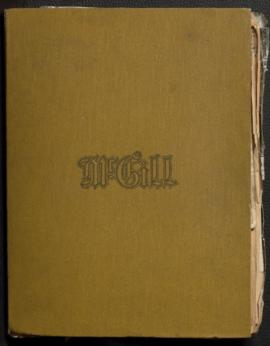- CA RBD MSG BW1203
- Collection
- approximately 1850-1981, predominant 1913-1940
This collection consists of materials dated from approximately 1850-1981, but predominantly from 1913-1940, relating to Dr. Casey Albert Wood’s research, writing, correspondence, and personal interest concerning ornithology, vertebrate zoology, memoir and family history, Emma Shearer Wood and Blacker Library collection development, ophthalmology, politics, and current events. Materials relate chiefly to Wood’s “Introduction to the Literature of Vertebrate Zoology” (1921-1956), falconry (1930s), his unpublished memoir (1930s), the development of McGill University’s Emma Shearer Wood and Blacker Libraries (1918-1941), the history of ophthalmology (1925-1936), “Fundus Oculi” (1911-1934), his travels and research expeditions studying birds in their natural habitat (1920-1940), political interests, and correspondence relating to these activities and subjects.
There are approximately 2902 incoming and outgoing pieces of correspondence including letters, postcards, notes, telegrams, and cards. Series 1) Research and writing, contains the largest volume of correspondence relating to “the Introduction to the Literature of Vertebrate Zoology.” While Series 2) Research trips, contains the largest portion of photographs. Other materials in this collection include research notes, manuscripts, page and galley proofs, book and article reprint publications, postcards, artwork, glass plate negatives, book plates, palm leaf manuscripts, artefacts, printed ephemera, clippings, journals, and administration and financial records relating to Wood’s publications or the Emma Shearer Wood and Blacker Libraries.
There are gaps within this collection relating to geographic locations, as not all locations Wood is known to have visited are represented or are only minimally represented. Asian countries, such as China or Japan, are not represented in this collection. While geographic locations that are prominent within the collection are Fiji, Sri Lanka and India.
The series consists of 1) research and writing (ca. 1850-1956); 2) research trips (1920-1937); 3) scrapbooks (1887-1946); 4) collection development (1918-1941); 5) published books (1907-1981); 6) artefacts (191-?, 1920-1937); and 7) glass negative plates (1924, 1927, 1930, 1956).
Wood, Casey A. (Casey Albert), 1856-1942



